Painter of Mystical Landscapes and Disney’s Magic Tales
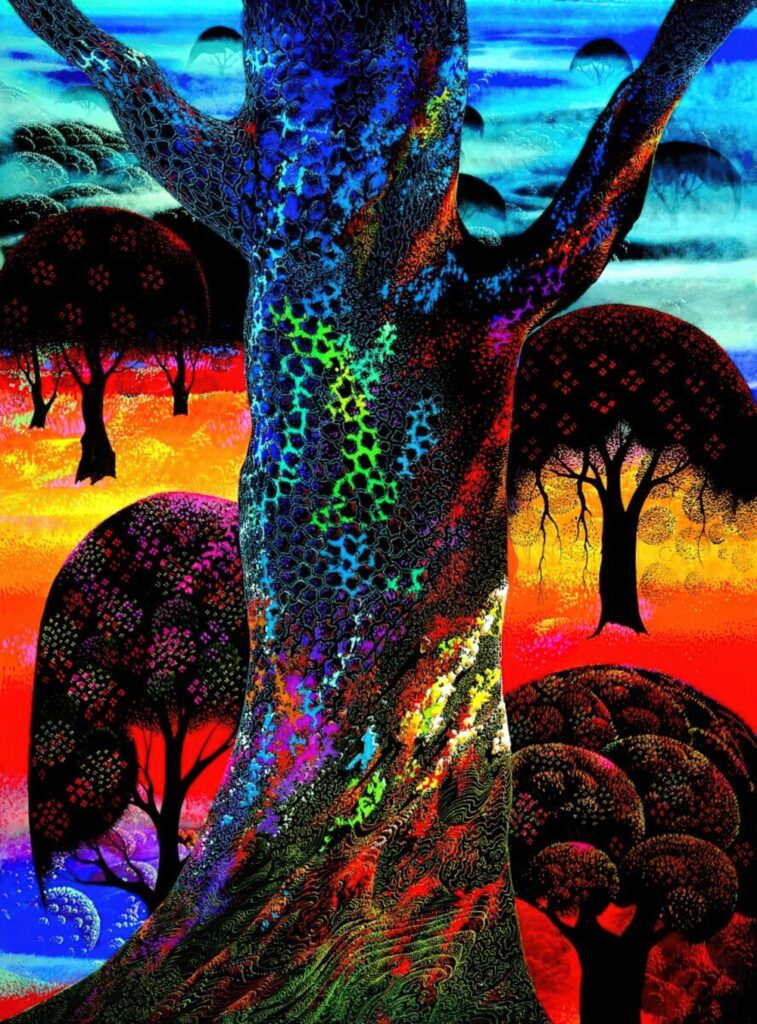
Eyvind Earle, born in New York City in 1916, was a prolific American artist whose career spanned over six decades.
He is best known for his distinctive style that blended fine art and animation, particularly his work at Walt Disney Studios.
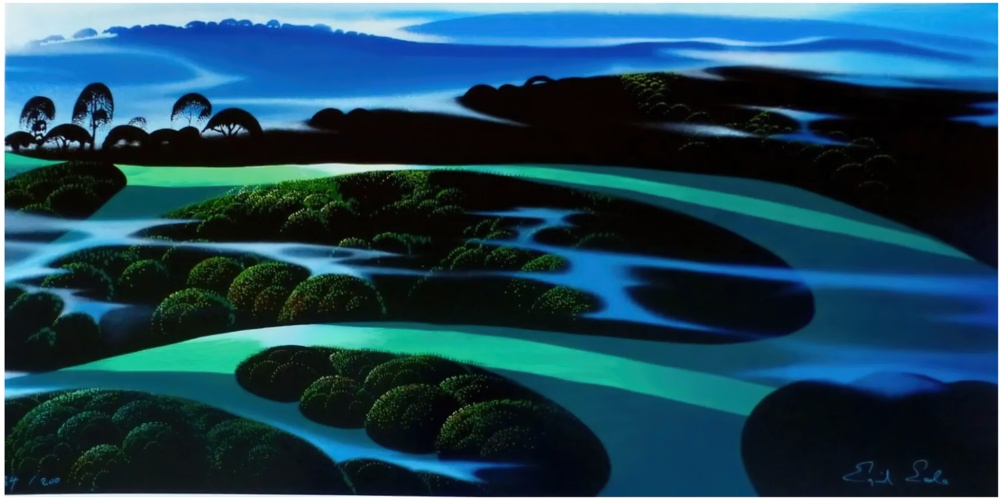
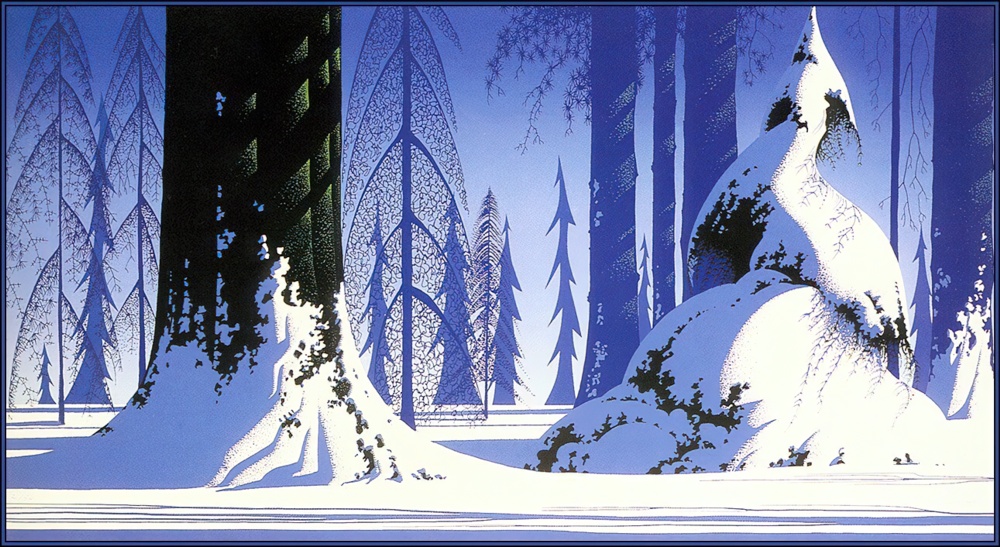
Eyvind Earle’s early career
Earle’s father, Ferdinand Earle, a professional artist, played a significant role in Eyvind’s early development, challenging him to either read 50 pages of a book or paint a picture every day from the age of 10. This rigorous discipline laid the foundation for his lifelong dedication to art.
Not surprisingly, Earle’s career began to take off at a young age. By 14, he had his first solo exhibition in France, and by 21, he was showcasing his work in New York at the Charles Morgan Galleries.
His early works were realistic, but after studying masters like Van Gogh and Cézanne, he developed his unique style. His landscapes, often serene, untouched nature scenes, are remarkable for their dreamy mood.
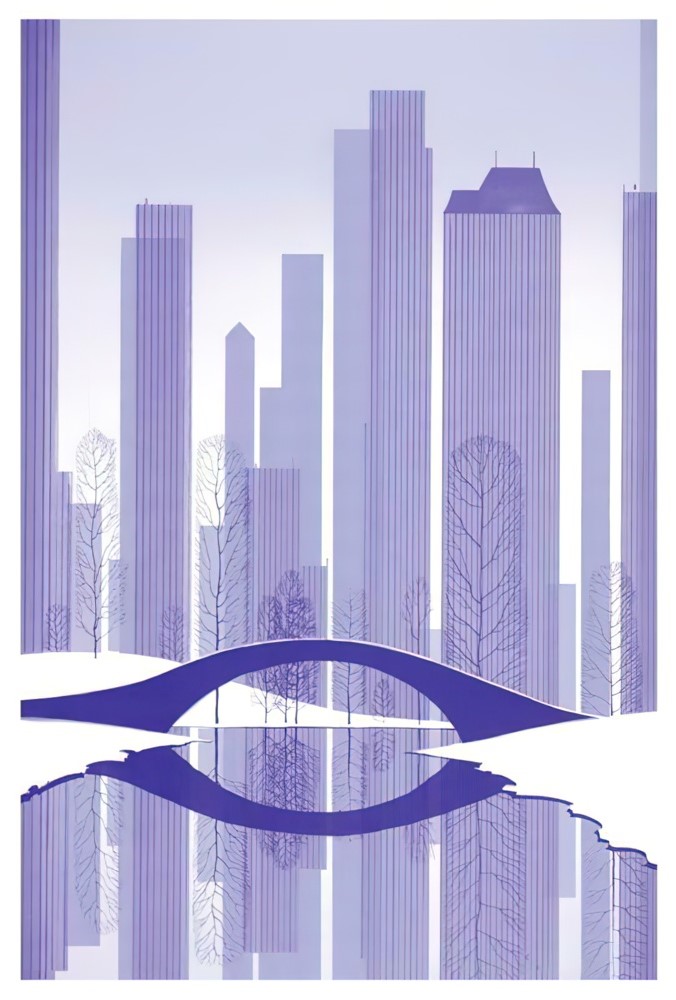
The Disney years
In 1951, Earle joined Walt Disney Studios as an assistant background painter. His innovative techniques and unique aesthetics quickly earned him a promotion to color stylist, where he played a crucial role in defining the visual style of iconic films like “Sleeping Beauty” (1959).
Earle used gouache to create backgrounds by starting with bold shapes (e.g., blobs for trees or bushes) and elaborating them with smaller and smaller details, achieving a filigree-like intricacy.
His work on “Sleeping Beauty” was particularly groundbreaking, as it marked the first time that background paintings had determined the visuals of a Disney film.
Earle’s use of bold colors and intricate details gave the film its magical, medieval look.
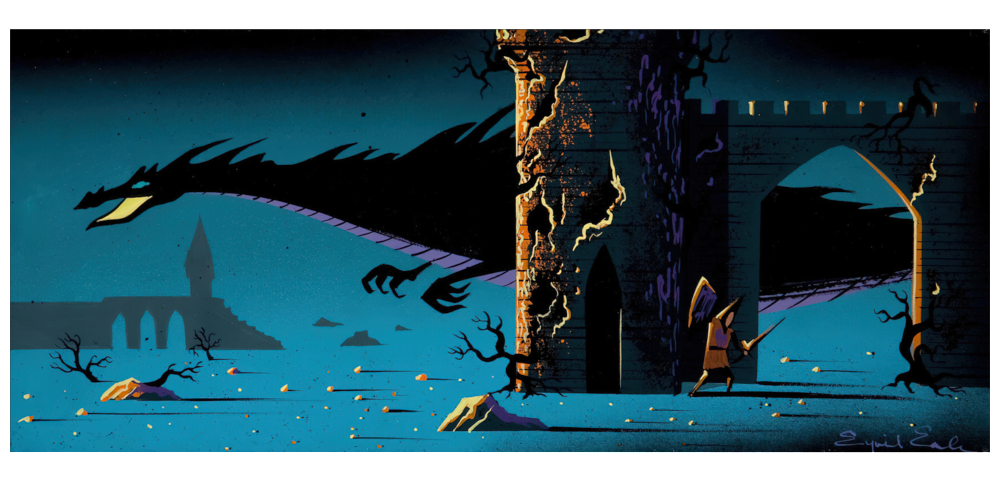
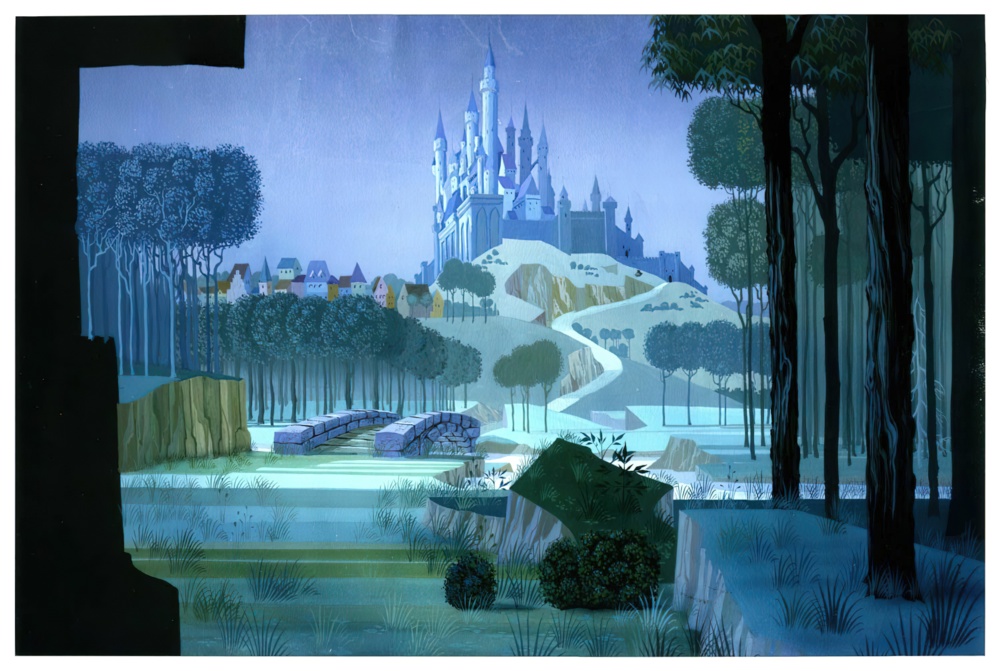
Beyond animation, Earle was a versatile artist who worked in various mediums, including watercolor, tempera, acrylic, scratchboard, and silkscreen.
His personal philosophy centered on the search for beauty in the world, which drove his unique style of meticulous detail and vibrant landscapes.
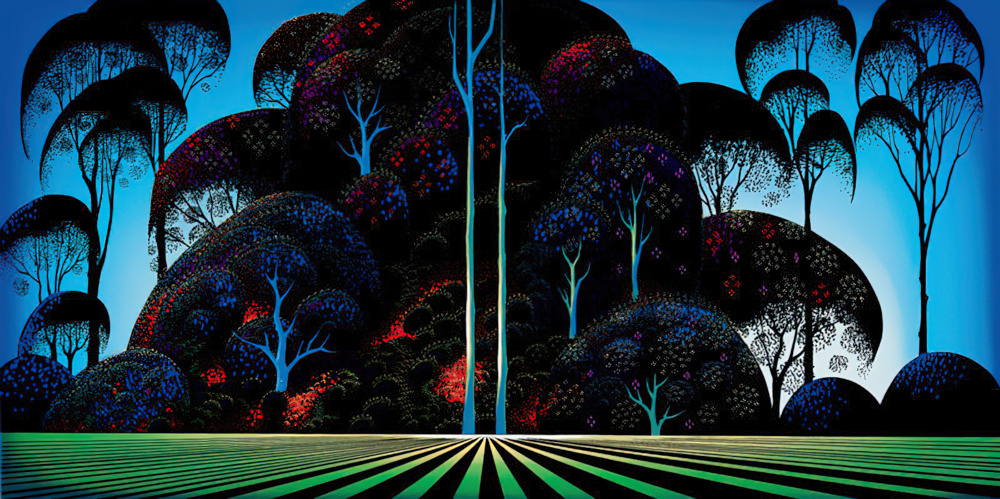
His legacy extends beyond his contributions to Disney, as he continued to produce a diverse body of work, including oils, sculptures, and limited-edition serigraphs, until his death in 2000.
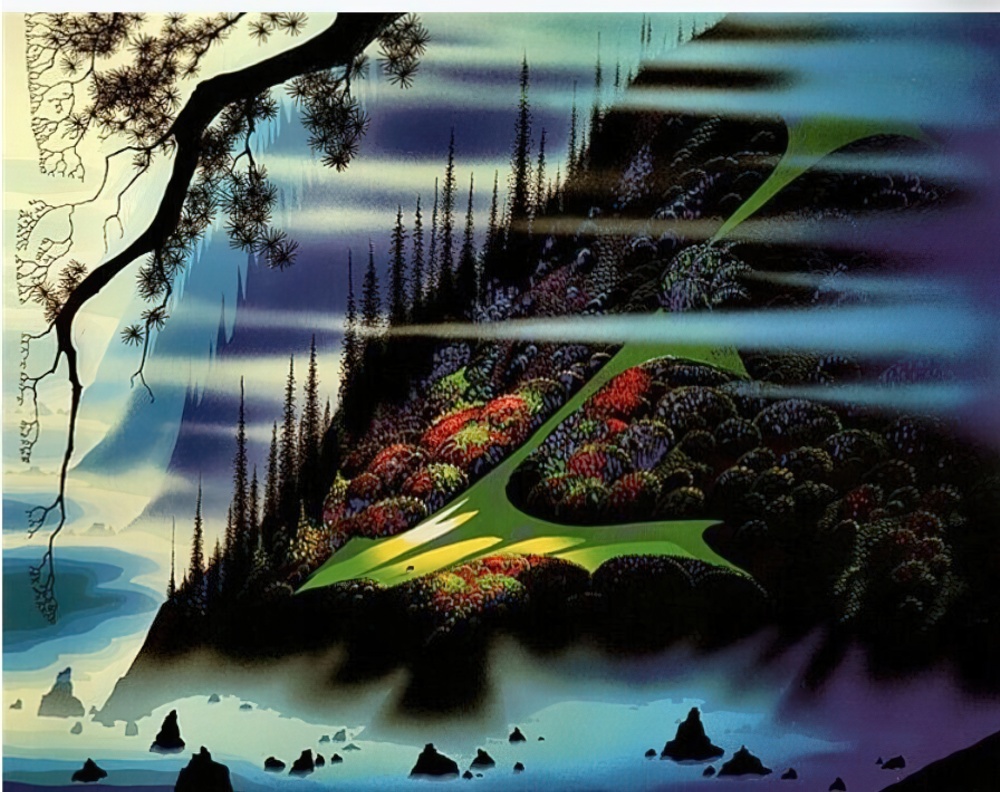
Earle’s influence on the art world is profound, with his works held in collections like The Metropolitan Museum of Art.

Find out more about Eyvind Earle on his website
